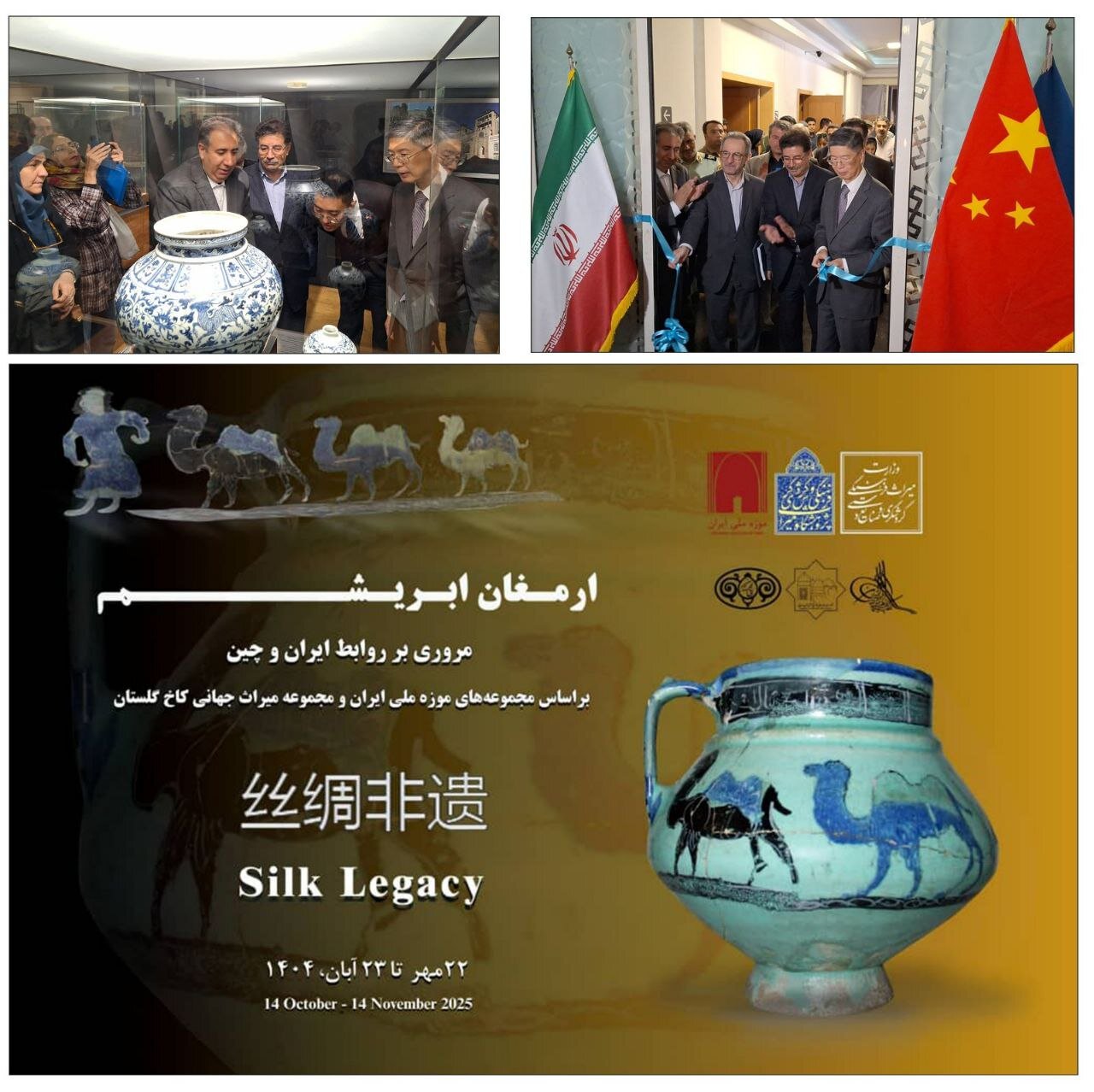“Silk Legacy” exhibition celebrates centuries-old cultural ties between Iran and China

TEHRAN— The National Museum of Iran has opened the exhibition “Silk Legacy: A Review of Iran–China Relations,” highlighting the enduring cultural and historical connections between the two ancient civilizations
Speaking at the opening ceremony, Jebrael Nokandeh, Director General of the National Museum of Iran, said the relationship between Iran and China dates back thousands of years, strengthened by historic trade routes such as the Silk Road, the Lapis Lazuli Road, and the Great Khorasan Road, which linked the two nations through exchanges of goods, ideas, art, and technology.
“These ties are not only historical but continue to thrive today,” Nokandeh noted. “On the occasion of the 100th anniversary of the Palace Museum in Beijing, I attended the 7th Taihe Forum, where representatives from more than 160 museums worldwide discussed inter-museum cooperation. The National Museum of Iran extended its congratulations to the Chinese people on this important milestone.”
Nokandeh announced that a memorandum of understanding had been signed between the National Museum of Iran and the National Museum of China, represented by Mr. Luo Wenli, to enhance cultural collaboration. He added that Iran is also participating in the “Collections from Museums of the Shanghai Cooperation Organization Member States” exhibition currently underway in China.
Last year, the National Museum of Iran organized the touring exhibition “The Glory of Ancient Persia” at the Palace Museum in Beijing, the Shanghai Museum, and the Xinjiang Regional Museum in Ürümqi, marking an important step in strengthening cultural dialogue. The museum also contributed to the 2024 Beijing exhibition “Historical Encounters between China and West Asia,” which featured more than 260 works from domestic and international institutions.
“The joint exhibitions in Beijing and Tehran reflect our shared commitment to cultural diplomacy and mutual understanding,” Nokandeh said. “Museums play a vital role in showcasing the deep-rooted heritage and shared values of our two nations.”
The “Silk Legacy” exhibition, organized by the Research Institute of Cultural Heritage and Tourism and the National Museum of Iran, presents nearly 90 artifacts from the Parthian to the Qajar periods — including 77 items from the National Museum of Iran and 13 from Tehran’s UNESCO World Heritage Site, Golestan Palace.
Officials and experts involved in organizing the event include Dr. Mohammad Ebrahim Zarei, President of the Research Institute of Cultural Heritage and Tourism; Dr. Mohammadreza Mehrandish, Art and Media Advisor; Dr. Dariush Akbarzadeh and Dr. Morteza Hesari, scientific coordinators of the exhibition; as well as Dr. Ali Darabi, Deputy Minister and Cultural Heritage Vice-President; and Dr. Leila Khosravi, Director General of Museums.
AM
Leave a Comment